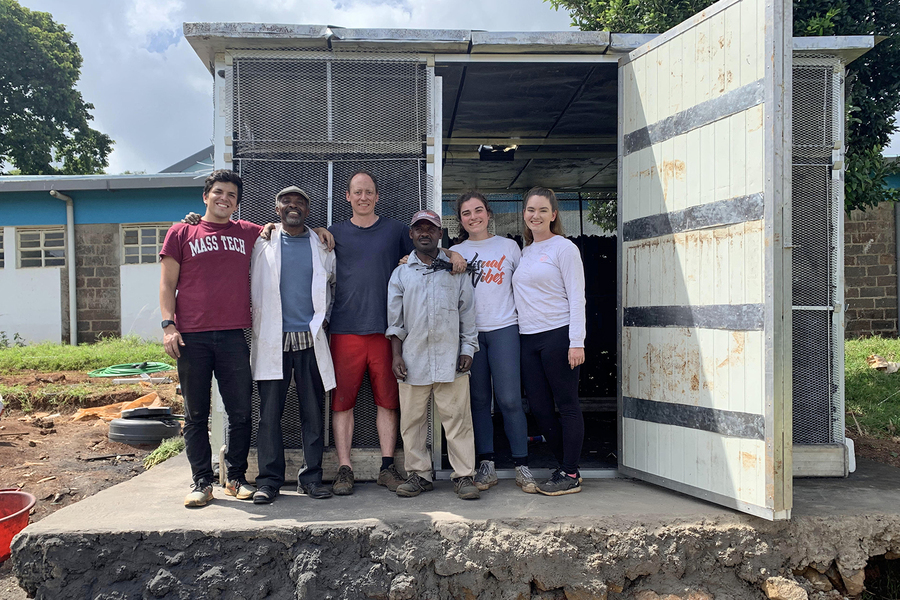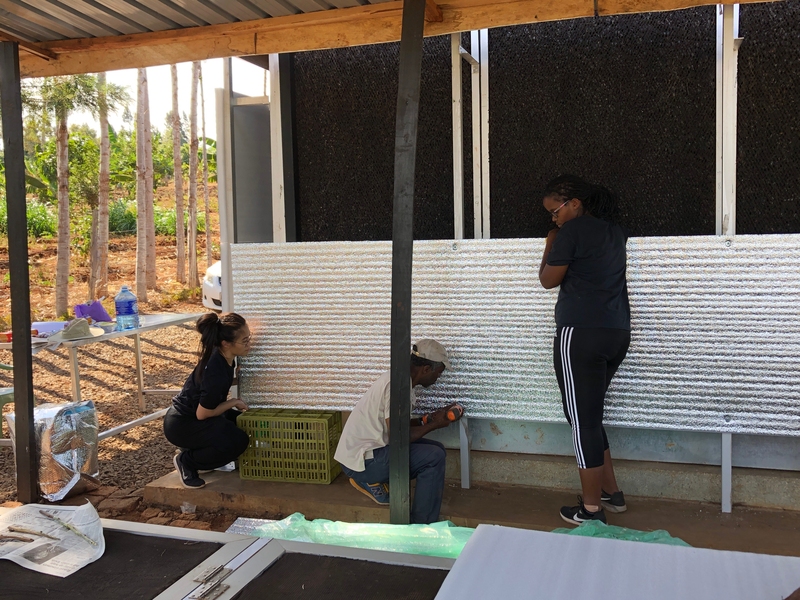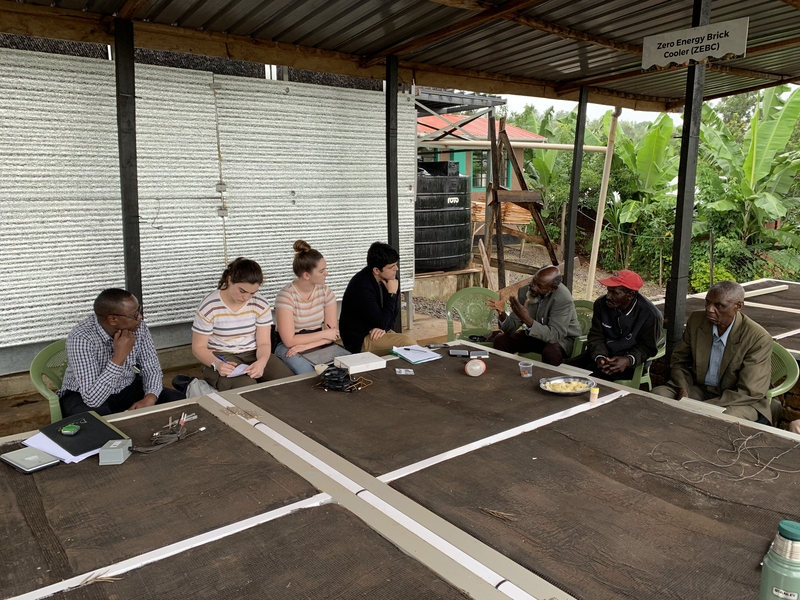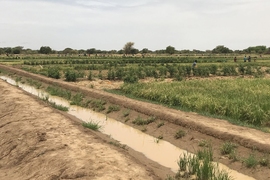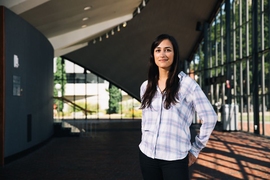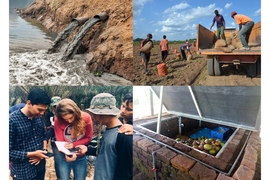For smallholder farmers living in hot and arid regions, getting fresh crops to market and selling them at the best price is a balancing act. If crops aren’t sold early enough, they wilt or ripen too quickly in the heat, and farmers have to sell them at reduced prices. Selling produce in the morning is a strategy many farmers use to beat the heat and ensure freshness, but that results in oversupply and competition at markets and further reduces the value of the produce sold. If farmers could chill their harvests — maintaining cool temperatures to keep them fresh for longer — then they could bring high-quality, fresh produce to afternoon markets and sell at better prices. Access to cold storage could also allow growers to harvest more produce before heading to markets, making these trips more efficient and profitable while also expanding consumers’ access to fresh produce.
Unfortunately, many smallholder farming communities lack access to the energy resources needed to support food preservation technologies like refrigeration. To address this challenge, an MIT research team funded by a 2019 seed grant from the Abdul Latif Jameel Water and Food Systems Lab (J-WAFS) is combining expertise in mechanical engineering, architecture, and energy systems to design affordable off-grid cold storage units for perishable crops. Three MIT principal investigators are leading this effort: Leon Glicksman, professor of building technology and mechanical engineering in the Department of Architecture; Daniel Frey, a professor in the Department of Mechanical Engineering and the faculty director for research at MIT D-Lab; and Eric Verploegen, a research engineer at MIT D-Lab. They are also collaborating with researchers at the University of Nairobi to study the impact of several different chamber designs on performance and usability in Kenya. Together, they are looking to develop a cost-effective large-scale cooperative storage facility that uses the evaporative cooling properties of water to keep harvests fresher, longer.
Evaporative cooling
Evaporative cooling involves the energy dynamics of the phase change of water from its liquid state into its gas state. Simply put, when dry air moves across a saturated surface such as a container full of water, the water molecules absorb a large amount of heat as they change from liquid to gas, cooling the surrounding air. Evaporative cooling isn’t a new concept. People have been leveraging this property of water to cool buildings and keep harvests fresh for thousands of years. Today, in many arid regions, people use a double clay pot system to harness the evaporative cooling process to prolong the freshness of fruit and vegetables. Known as a pot-in-pot cooler or Zeer pot, the space between a larger and smaller ceramic pot is filled with sand and kept wet. As water evaporates through the vessel walls, it lowers the temperature of the inner chamber.
However, while clay pot coolers can be effective for individual household use, they are limited by their storage capacity. Some larger-scale produce storage strategies that use evaporative cooling exist and are in use in Kenya and other countries and arid regions. In fact, Verploegen has focused his research at MIT D-Lab on evaporative cooling technologies since 2016, resulting in the production of several designs currently at the pilot stage.
Yet size still remains a challenge. Few designs exist today that are large enough to effectively store several metric tons of produce and that satisfy important criteria like ease of construction, quality of performance, and affordability, which would meet the storage needs for larger harvests or groups of farmers. Designs exist for solar-powered mechanical refrigeration; however, the costs associated with the energy, implementation, and maintenance of these units is prohibitive to many smallholder farmers around the world. Teaming up with Frey and Gliskman for this J-WAFS-funded effort, the group is aiming to address this lack of access. “For us, the questions became, ‘How can we scale evaporative cooling techniques and improve upon the existing ways that people have been using it for centuries?’” Glicksman reflects. With this in mind, the team set out to find a solution.
Sustainability as a design throughline
Initially the team’s focus was on improving the performance of existing cooling chamber technologies. “We worked with local folks [in Kenya] and built some of the more traditional designs that use charcoal,” says Verploegen. “However, what we found was that these efforts were very labor-intensive, time-consuming, and overall not very replicable.” Building on the ongoing user research performed by teams at the University of Nairobi and MIT D-Lab, the researchers have been exploring different kinds of materials for the structure, and settled on shipping containers as the basis for the chamber.
As it turns out, the height and width of a shipping container meets the dimension specifications of users’ requirements. Plus, using shipping containers provides the opportunity to up-cycle existing, used materials. “I’m always checking out where used shipping containers are available and checking prices in various countries for our cost model,” Verploegen admits. So, in their current design, they retrofitted a shipping container with a double-layered insulating wall, a solar-powered fan to force air through a central matrix of wet pads, and interior storage crates arranged to maximize convection and cooling rates and ease of use.
This design is informed by several analytical models that the research team continues to develop. The models evaluate the effect that different evaporative cooling materials, arrangements of produce storage crates, and exterior insulating materials have on the efficiency and functionality of the cooling chamber. These models help maximize cooling capabilities while minimizing water and energy usage, and also inform decisions on material choices.
One such decision was the transition away from wetted charcoal as an evaporative cooling medium. Charcoal is commonly used as a cooling membrane material, but the release of CO2 during the burn-treatment process and subsequent negative environmental effects made it less attractive to the team. Currently, they are experimenting with plant-based aspen fiber and corrugated cellulose pads, which are both a cost-effective and environmentally sustainable solution. Lastly, the team has installed a solar-powered electronic control system that allows farmers to automate the chamber’s fan and water pumps, increasing efficiency and minimizing maintenance requirements.
Collaborating overseas
Critical to the research project’s development is collaboration with researchers at the University of Nairobi (UON) in Kenya. Professor Jane Ambuko, a leading horticulturist at UON in the Department of Plant Science and Crop Protection, is well-versed in post-harvest technologies. In addition to her expert knowledge on crop physiology and the effects of cooling on produce, Ambuko is well-connected within the local Kenyan farming community and has provided the team with critical introductions to local farmers willing to test out the team’s chamber prototypes. Another collaborator, Duncan Mbuge, an agricultural engineer in the UON Department of Environmental and Biosystems Engineering, has been able to provide insight into the design, construction, and materials selection for the cooling chambers.
The project has also involved exchange between MIT D-Lab and UON students, and this collaboration has opened up additional avenues for both institutions to work together. “The exchange of ideas [with MIT] has been mutually beneficial,” says Mbuge, “the net result has been an overall improvement in the technology.” The two professors, along with their research students, have continued monitoring and managing the pilot structure built in Kenya. “Together, with expertise from the MIT team, we complete each other,” adds Ambuko.
“The researchers at UON have a whole history and institutional knowledge of challenges that previously tried designs have come up against in real-world contexts,” Verploegen says, adding this has been essential to moving the MIT designs from concept to practice. Farmers have also played a major role in shaping the design and implementation of this technology. Following the D-Lab model, the MIT and UON research teams worked together to run a number of interviews and focus groups in farming communities in order to learn directly from users about their needs. The farmers in these communities have important insights into how to design a practical and effective cooling chamber that is suitable for use by farming cooperatives. Given that it will have more than one user, farmers have asked for a crate-stacking arrangement that will allow for easy inventory management. Farmers have pointed out additional benefits of the evaporative cooling chambers. “We have been told that these containers can also provide special protection from rodents,” Frey explains, “that turns out to be a very important for the farmers that we’re working with.”
Potential impacts
Overall, the team’s models indicate that a standard 40-foot-long shipping container outfitted as an evaporative cooler will be able to store between 6,500-8,000 kilograms of produce. The cost of constructing the chamber will likely be $7,000-$8,000, which, compared to mechanically refrigerated options of a similar size, offers over a 50 percent reduction in cost, making this new design very lucrative for farming cooperatives. One of the ways the team is keeping the production costs down is by using local materials and a centralized manufacturing strategy. “We are of the mindset that building a technology of this size and complexity centrally and then distributing it locally is the best way to make it accessible and affordable for these communities,” Verploegen says.
There are many benefits to making technologies accessible to and replicable by members of specific communities. Collaborative development is a cornerstone of D-Lab’s work, the academics and research program that Verploegen and Frey are a part of. “At D-Lab, we're interested in planting the idea that community involvement is critical in order to adapt technological solutions to people’s needs and to maximize their use of the resulting solution,” says Frey. While an emphasis on co-creation is expected to result in community buy-in for their cooling solution, centralized manufacturing and construction of the containers is an additional strategy aimed at ensuring the accessibility and affordability of the technology for the communities they aim to serve.
While the current design has been developed for farmers near Nairobi in Kenya, these evaporative cooling devices could be deployed in a host of other regions in Kenya, as well as parts of West Africa and regions of western India such as Rajasthan and Gujarat. Verploegen, who is also leading a related J-WAFS-funded effort on evaporative cooling through the J-WAFS Grant for Water and Food Projects in India, is developing designs for crop storage for farms in western India. He says that “the scale of need is what determines what kind of evaporative cooling technology a community might need.” His work in India is focused on helping to disseminate technologies that are smaller and constructed at the location where they will be used, using brick and sand. He is also “helping to make them more efficient and improving the design to best fit local needs.”
Ultimately, the research team’s goal is to make their evaporative cooling chamber something that local farming communities will consistently use and benefit from. To do this, they have to “come up with not only the MIT solution, but a solution that the people on the ground find is the best for them,” says Glicksman. They hope that this technology will not only help producers economically, but that it will also enable widespread food storage and preservation capabilities, allowing better access for populations to fresh produce.
To read more about this work, visit the project site via J-WAFS.
